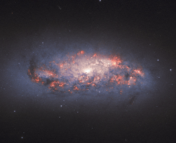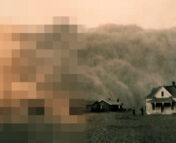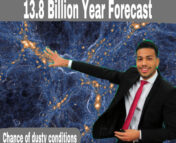Title: Blue Monsters. Why are JWST super-early, massive galaxies so blue?
Authors: Francesco Ziparo, Andrea Ferrara, Laura Sommovigo, Mahsa Kohandel
First Author’s Institution: Scuola Normale Superiore, Pisa, Italy
Status: Submitted to MNRAS, available on arXiv
The James Webb Space Telescope (JWST) is already reshaping our understanding of galaxy formation and evolution, and keeps breaking the record for the oldest known galaxy! It turns out some of these early galaxies may challenge existing models of galaxies and their dust. Today’s authors look at a population of galaxies discovered by JWST which are metal enriched, very bright, and massive. Normally, a galaxy with these qualities would have a lot of dust, and would therefore undergo significant attenuation – the reddening of light due to dust. However, the rest frame UV emission of this set of galaxies (observed with the infrared JWST due to their high redshift) makes them appear quite blue, and fitting their spectral energy distributions (SEDs) reveals these galaxies experience minimal attenuation. Where did all the dust go? The authors propose two explanations for how you could get a bright, enriched galaxy without a lot of apparent dust: either the dust is being ejected, or the dust isn’t located where UV emission occurs.
For the dust ejection theory to work, two conditions must be met. The ejection of dust is driven by radiation pressure, the outward force that comes from ultraviolet emission in the galaxy. Radiation pressure is related to the galaxy’s star formation rate (SFR) surface density, or the number of stars a galaxy forms per year per unit area. The radiation pressure must overcome the gravitational pressure, the pressure that holds the matter of the galaxy together, for outflows to occur. The ratio of radiation to gravitational pressure is known as the Eddington ratio, and if this ratio is greater than one, then the radiation pressure exceeds the gravitational pressure. By looking at how the Eddington ratio depends on the SFR surface density, the author’s examine what sort of galaxy could power an outflow of dust. The density of star formation depends on the parameter κs, which is a measure of the burstiness of a galaxy – essentially, a higher value of this parameter indicates a higher intensity of star formation. As seen in the green curve of Figure 1, only with κs=3.3 or greater can the Eddington ratio be exceeded, indicating that dust ejection would occur in starburst type galaxies.

Additionally, for dust ejection to be effective at removing dust, the rate of dust ejection must be higher than the rate of dust production. Figure 2 shows how the outflow rate depends on the SFR surface density – only in the dark shaded region left of the red line would the outflow rate exceed dust production. Although dust ejection is a plausible theory for the apparent lack of dust in bright, blue galaxies observed by JWST, the authors note that some galaxies at high redshifts may not meet the physical criteria for dust ejection and could instead fall into the dust accumulation regime.

But what if the dust isn’t ejected? The authors propose another idea: maybe the UV emission mostly comes from the diffuse interstellar medium, while the dust is concentrated largely in infrared emitting giant molecular clouds. With this assumption, the authors can make predictions for a lower limit on the flux in the far infrared, which would originate from the dusty molecular clouds. Because of the high redshift of these galaxies, their far infrared continuum emission is redshifted to millimeter bands observable with ALMA. For the high redshift galaxy GHZ2/GL-z13 that was observed with both JWST and ALMA, its far infrared flux fell well below the predicted lower limit. The authors suggest that this result is more consistent with a dust ejection scenario in which the galaxy would be dim in the far infrared due to its lack of dust.
Puzzling objects have appeared with JWST that may rock existing galaxy formation and evolution models to their very core! The ejection or spatial distribution of dust may explain why some high redshift, bright galaxies appear so blue, but for one galaxy with ALMA data, the ejection model seems more likely. Observations with facilities such as ALMA can test physical theories about strange new discoveries from JWST, of which many more are sure to come.
Edited by William Balmer
Image Credit: NASA, ESA, CSA, and STScI, Openclipart




